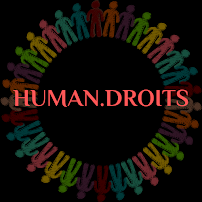The author of this blog is Ritika Sharma. She is the Founder of the blog, HUMAN.DROITS, and is also an LL.M. Graduate from the Geneva Academy of International Humanitarian Law and Human Rights. She can be reached at ritika4523@gmail.com.
 |
| Battle tank |
Introduction
On 21st October 2022, the UN's Political Affairs Chief said,
"Russia’s military escalation in Ukraine will lead to more suffering worldwide and must be reversed".
This escalation has taken thousands of lives and is disrupting the livelihood of others present in the conflict-prone area. The UN General Assembly denies the validity of these attempted annexations of the parts of Ukraine by Russia under international law.
The seeds of this war are 8 years old, which makes it crucial for us to delve into the story leading to this armed conflict. This conflict has been given the status of the most minacious conflict in Europe after the 1939-1945 tragedy. This is my first blog on the 'Ukraine-Russia Conflict', which will solely aim at understanding the history behind this crisis,
The geographical history that stirred up the conflict
Ukraine is a part of Europe, and Russia is located in Eurasia (Europe and Asia both). Ukraine, which is currently under a huge crisis was the second most powerful of the Soviet Republics, Russia being the first one.
In 2013, Ukrainian President Yanukovych reversed the plans to strengthen the nation's ties with the European Union, for which he was highly condemned by the citizens of his own country. As a result, the revolt called 'Euromaidan' was initiated by the Ukrainian citizens. Russian President saw it as an emerging peril of the fascist coup (in other words, Western influence on the Ukrainian population) that could endanger Russian ethnicity in Crimea. At this juncture, it is essential to understand that Ukrainian citizens have differences in terms of ideologies and ethnicity, which are reflected by using the terms 'Eastern Ukraine' and 'Western Ukraine' (discussed in the later section).
 |
| Russia-Ukraine map showing conflict zone |
Therefore, calling it an 'annexation', Russia invaded Crimea (a peninsula, located in the Black Sea), and has called referendums in other regions including, Luhansk, Donetsk, Zaporizhzhia, and Kherson.
The Ambiguity of the Budapest Agreement
The primary reason on which Russia bases its attempts to conquer Ukraine is that it was a part of the Soviet Union till 1991. However, after the collapse of the Soviet Union in 1991, Ukraine declared its independence. Ukraine was equipped with nuclear weapons (the world's third largest; inherited from the Soviet ties) around this time, but a lot of these were traded with Russia in 1994. Consequently, Ukraine became a non-nuclear nation and joined the Non-Proliferation Treaty. In exchange for this, the Budapest Memorandum was signed, the original signatories being Ukraine, Russia, Belarus, Kazakhstan, the US, and the UK. This ambiguous agreement contained security assurances for the sovereignty of Ukraine. It is ambiguous as the term 'security assurances' under this agreement is not described anywhere.
Evidently, Russia breached this Memorandum in the year 2014.
Differences between the East and West Ukraine
Russia's invasion of Ukraine is due to the strong historical background of these two nations. Russia has cultural, political, and ethnic interests in this territory, especially East Ukraine. Millions of Russians were residing in parts of Ukraine around 2001. A glimpse into the following differences between Western and Eastern Ukraine can help us understand this connection:
- In contrast to Western Ukraine, Eastern Ukraine is closer to Russia on every parameter, be it geography or history.
- The citizens of Western Ukraine identify themselves as more Europeans, unlike Eastern Ukrainians who are influenced by Russia.
- These two areas also differ on the basis of languages. In the West, the majority of people speak the Ukrainian language, while in the East, the majority speak Russian.
 |
| Map of Ukraine |
The Ineffective Minsk Agreements
The Minsk Agreements between Ukraine and Russia are examples of flawed instruments that could not bring peace to this mass turbulence. There are two Minks Agreements, namely Minsk Agreement I and Minsk Agreement II signed in the year 2014 and 2015, respectively.
Some of the ways in which the Minsk Agreement was to aid Ukrainians are the prohibition of the usage of weapons from both ends, monitoring of the situation by the Organisation for Security and Co-operation in Europe, restoration of human rights of the Donbas population, etc. Aiming at putting a stop to the emerging tensions in the Donbas and South-Eastern regions of Ukraine, the implementation of the provisions of this agreement faced several technical barriers.
Concluding remarks
History distinctly highlights the strong connection between these two nations, which has become a cause of trouble. The political and territorial disputes have already resulted in the loss of several lives. Ukraine is now taking resort to conscription to fill up its armies. Russia's obsession with territory and power under the garb of preserving its ethnicity is disrupting the peace in the world and has also stained the reliability and competence of international law. This invasion (which began on 24th February 2022) has an 8-year-long history and 8 months old suffering, but still no respite.
...to be continued.
Sources
https://news.un.org/en/story/2022/10/1129792?utm_source=UN+News+-+Newsletter&utm_campaign=f9224f60ea-EMAIL_CAMPAIGN_2022_10_22_12_00&utm_medium=email&utm_term=0_fdbf1af606-f9224f60ea-107661797
https://www.cfr.org/backgrounder/ukraine-conflict-crossroads-europe-and-russia
https://www.youtube.com/watch?v=nK-yJD_fAtk











%20in%20Myanmar.%20The%20image%20features%20a%20resilient%20woman%20standing%20firm%20in.webp)


0 comments:
Post a Comment